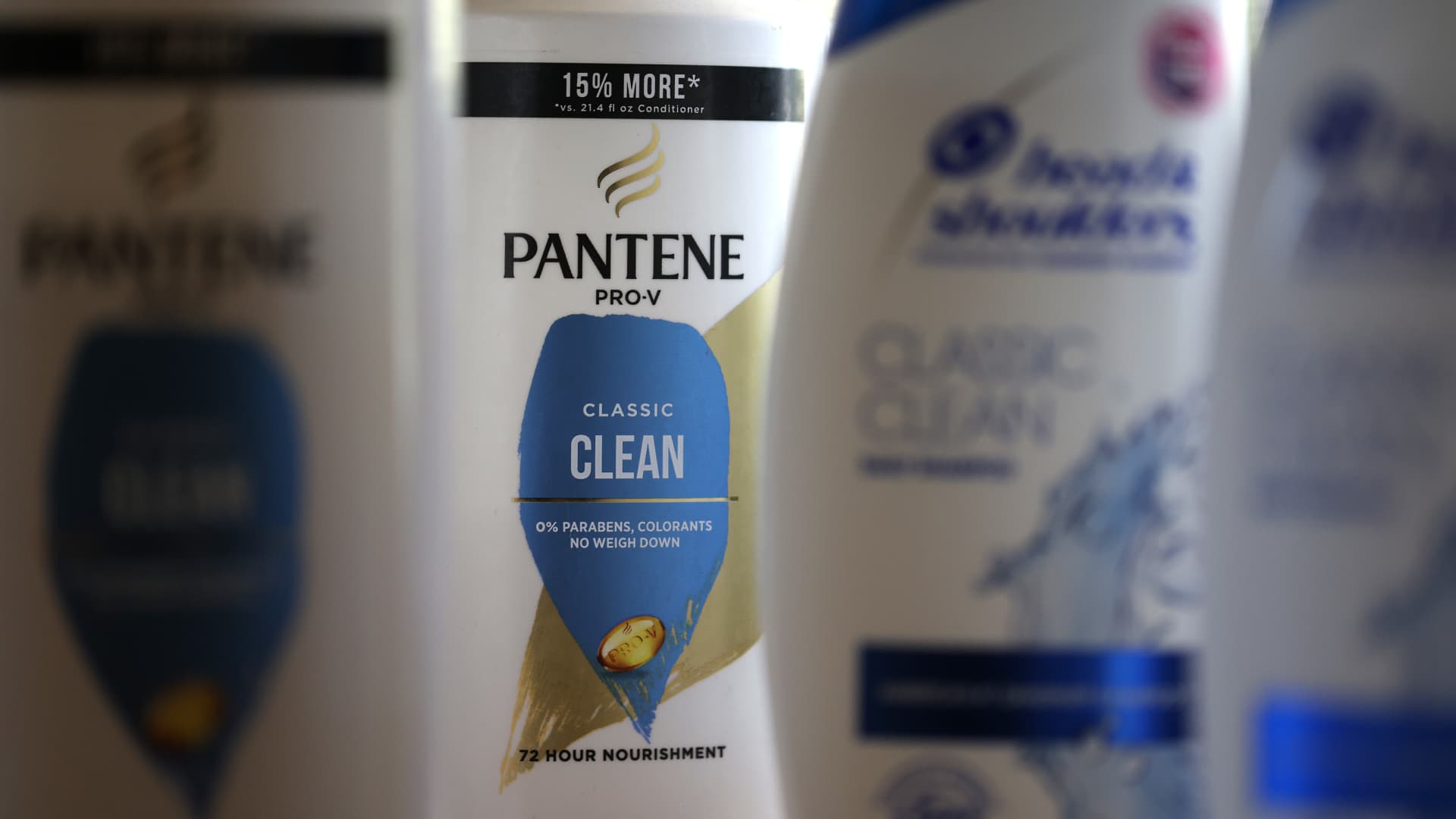Procter & Gamble on Friday reported mixed quarterly results as it struggles to bring back shoppers after two years hiking prices across its portfolio, from Tide detergent to Charmin toilet paper.
The company’s prices were up 3% compared with the year-ago period, although CFO Andre Schulten said on a media call that P&G didn’t institute any nationwide price hikes during the quarter.
Despite its disappointing sales, the consumer giant raised its full-year outlook for earnings growth.
Shares of the company fell 1% in premarket trading.
Here’s what P&G reported compared with what Wall Street was expecting, based on a survey of analysts by LSEG:
- Earnings per share: $1.52 vs. $1.41 expected
- Revenue: $20.2 billion vs. $20.41 billion expected
P&G reported fiscal third-quarter net income attributable to the company of $3.75 billion, or $1.52 per share, up from $3.4 billion, or $1.37 per share, a year earlier.
Net sales rose 1% to $20.41 billion. Organic sales, which strips out acquisitions, divestitures and foreign currency, increased 3% in the quarter.
But the company’s quarterly volume was flat for the second consecutive quarter. In October, executives said that they anticipated returning to volume growth in fiscal 2024. Three quarters in, the company hasn’t yet lured back many of the customers it scared away with its price hikes over the last two years.
However, three of P&G’s divisions reported volume growth for the quarter. Its beauty segment, which includes Olay and Pantene, saw volume rise 1%, fueled by innovation in personal care. The company’s grooming business, home to its Gillette and Venus razors, reported volume growth of 2%. And fabric and home care, which includes Febreze and Swiffer, saw 1% volume growth.
But P&G’s health care and baby, feminine and family care divisions saw volume drop further. The company blamed its higher prices and a weaker cold and flu season for the declines.
Geography also played a role in the company’s lackluster sales. China, the company’s second-largest market, is still seeing softer demand for products like its pricey SK-II skincare. Schulten also said that some markets, particularly in the Middle East, have seen retailers pull back on promotions amid geopolitical tensions tied to the war in Gaza.
“The impact is visible but limited, and we expect it to lessen, obviously, hopefully as these tensions ease over time,” he said.
In the U.S., P&G’s largest market, the company’s volume grew 3%. Schulten said that the U.S. consumer isn’t trading down or changing shopping behavior.
“Consumers don’t want to take a gamble when it comes to the type of performance … they know ultimately the price for trading down,” he said.
For the full year, P&G is now expecting core net earnings per share growth of 10% to 11%, up from its prior range of 8% to 9%. The company also raised its projection for unadjusted earnings growth to a range of 1% to 2%, up from its previous forecast of down 1% to flat. P&G maintained its outlook of 2% to 4% sales growth in 2024.
P&G also now expects a $900 million benefit from favorable commodity costs, up from its previous outlook of $800 million. That’s a reversal from the last two fiscal years, when commodity costs weighed on the company, leading to price hikes.
